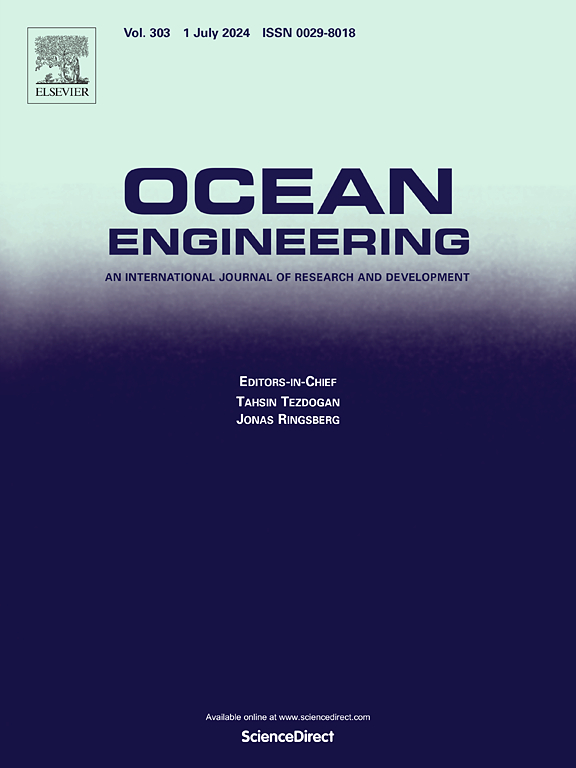Coupling mechanism of structure–cavitation impact in reflux self-excited oscillating nozzles
IF 5.5
2区 工程技术
Q1 ENGINEERING, CIVIL
引用次数: 0
Abstract
Aiming at improving the application of reflux self-excited oscillating nozzles (RSONs) in underwater cleaning, this study focuses on the influence of nozzle structure parameters on jet morphology evolution and cavitation impact characteristics at 10 MPa pressure. We establish a multi-scale analysis methodology integrating study of internal and external flow fields through high-speed camera visualisation experiments and large eddy simulation. A coverage growth rate index is proposed to normalise the evaluation of jet coverage area across nozzles with varying dimensions. Dynamic mode decomposition (DMD) reveals distinct modal energy distributions in jet velocity fields and cavitation fields. The results demonstrate that at the characteristic ratio Kt ranging from 0.4 to 0.5, symmetric vortex structures in the main chamber induce periodic jet sweeping motions. Adjacent jet bundles exhibit opposing velocity vectors, maximising the flow field coverage growth rate. However, when Kt exceeds 0.6, vortex de-stabilisation occurs, suppressing jet sweeping behaviour. Cavitation bubble clusters predominantly grow and collapse near the outlet. DMD analysis demonstrates that high-energy modes exhibit anti-symmetric vortex pairs, whereas low-energy modes represent small-scale turbulent structures with broad-band frequencies. This study elucidates the cavitation–vortex interaction mechanism in RSONs and provides a theoretical foundation for optimisation of nozzle designs in underwater cleaning.
回流自激振荡喷嘴结构-空化冲击耦合机理
为了提高回流自激振荡喷嘴(RSONs)在水下清洗中的应用,研究了喷嘴结构参数对10 MPa压力下射流形态演变和空化冲击特性的影响。通过高速摄像可视化实验和大涡模拟,建立了内外流场综合研究的多尺度分析方法。提出了一种覆盖增长率指标,用于对不同尺寸喷管的覆盖面积进行标准化评价。动态模态分解(DMD)揭示了射流速度场和空化场中不同的模态能量分布。结果表明,在特征比Kt在0.4 ~ 0.5范围内时,主腔内对称涡结构引起周期性射流扫掠运动。相邻的射流束表现出相反的速度矢量,使流场覆盖增长率最大化。然而,当Kt超过0.6时,旋涡失稳发生,抑制了射流的扫掠行为。空化泡团主要在出口附近生长和崩溃。DMD分析表明,高能模态表现为反对称涡对,而低能模态表现为宽带小尺度湍流结构。该研究阐明了空化-涡相互作用机理,为水下清洗喷嘴的优化设计提供了理论依据。
本文章由计算机程序翻译,如有差异,请以英文原文为准。
求助全文
约1分钟内获得全文
求助全文
来源期刊

Ocean Engineering
工程技术-工程:大洋
CiteScore
7.30
自引率
34.00%
发文量
2379
审稿时长
8.1 months
期刊介绍:
Ocean Engineering provides a medium for the publication of original research and development work in the field of ocean engineering. Ocean Engineering seeks papers in the following topics.
 求助内容:
求助内容: 应助结果提醒方式:
应助结果提醒方式:


